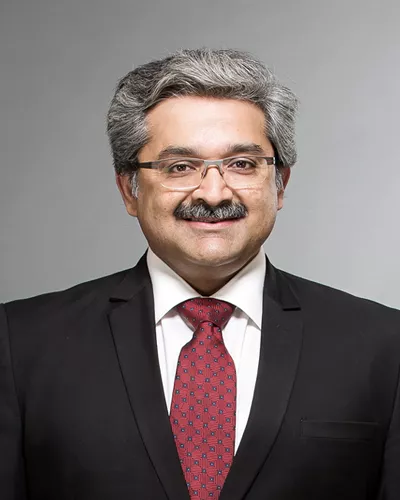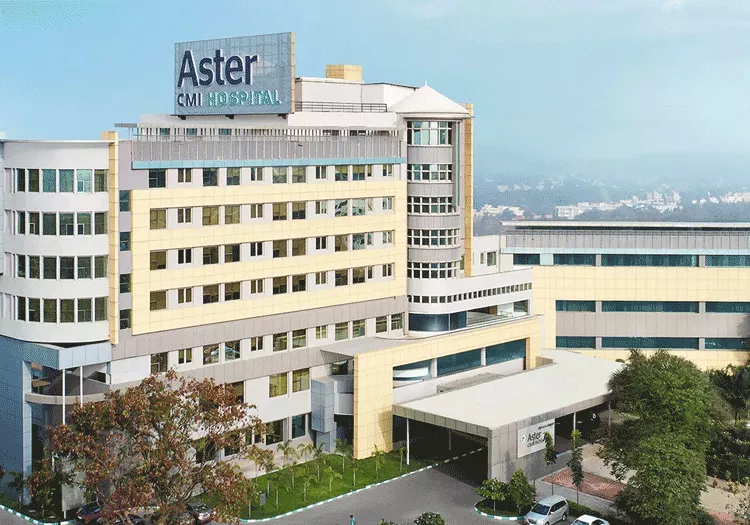Overview
Deep brain stimulation (DBS) is a surgery that involves putting a device in the brain to send electrical signals. This device has electrodes placed deep in the brain, and it's connected to another device that's like a pacemaker for the brain. This pacemaker sends electric pulses to help control how the brain works. DBS can be used to make the symptoms of conditions like Parkinson's disease, dystonia, or essential tremor, such as shaking, slowness, stiffness, and trouble walking, less severe. Successful DBS can allow people to reduce their medications and have a better life quality.
To perform DBS, doctors place a tiny electrode (a special wire) inside the brain. This electrode is connected to a small device called a neurostimulator, which is implanted in your chest or abdomen. The neurostimulator sends a mild electric current to the electrode in the specific brain area responsible for the symptoms. When this device is turned on, it sends electrical signals to control the incorrect nerve signals causing symptoms like tremors and rigidity.
DBS is often used to treat various conditions, including:
Parkinson's disease
Essential tremor
Dystonia
Epilepsy
Obsessive-compulsive disorder


A DBS system consists of the following components:
Lead: This is a thin wire with an electrode at the end, which is implanted in the specific target area of the brain.
Pulse Generator: Resembling a pacemaker-like device, it is positioned beneath the skin near the collarbone. The pulse generator is responsible for creating the electrical pulses.
Extension Lead: An extension wire runs under the skin and connects the lead to the pulse generator. It carries the electrical pulses from the device to the leads implanted in the brain.
Once activated, the pulse generator emits electrical signals that help modify abnormal brain activity in the targeted area, thereby alleviating symptoms. The device is powered by a battery.
Like any surgical procedure, DBS carries the risk of complications. These possible complications include:
Reactions to anesthesia.
Bleeding within the brain.
Leakage of cerebrospinal fluid, which surrounds the brain and spinal cord.
Infection.
Stroke.
Pain or swelling at the surgical site.
Movement of the electrode from its original location.
Allergic reactions to components of the implanted device.
Additionally, after the surgery, you may experience side effects, which can include:
Temporary tingling in the face and limbs.
Mild paralysis.
Speech or vision problems.
Sensations of jolting or shock.
Dizziness or loss of balance.
Reduced coordination.
Difficulty with concentration.
It's important to note that specific risks may vary depending on your individual medical condition. It's advisable to discuss any concerns or questions about these risks with your healthcare provider before undergoing the DBS procedure.
Preparing for DBS requires a significant commitment to the evaluation, procedures, and consultations both before and after the surgery. Here are some important considerations:
Medical Center Selection: DBS is typically offered at larger medical centers. If you don't live near one, be prepared for potential travel.
Financial Considerations: Be aware that the procedure and related appointments can be expensive, so it's essential to plan for the associated costs.
Realistic Expectations: Understand that while DBS can improve symptoms, it does not cure the underlying condition.
Before the DBS procedure, you will undergo several assessments to determine if it's the right option for you. These assessments may include tests to evaluate memory and cognitive function. Additionally, a psychiatrist may assess your mental health to address conditions like depression or anxiety before proceeding with DBS.
It's crucial to consult with your healthcare provider about any specific preparations you need to make in the days and weeks leading up to your DBS procedure, such as dietary restrictions or changes to your medication regimen.
No, DBS is not limited to treating tremors alone. It is effective in addressing various symptoms, including stiffness and slow movement, and can also provide relief from dystonic muscle cramps.
The DBS system remains inactive until the patient has healed after implantation. Once activated, it can lead to a reduction in bothersome symptoms.
The response to DBS treatment varies from person to person. While some individuals may require surgical implantation of devices, others may have the option of using a needle or catheter instead of making an incision.
In terms of physical appearance, there should be no noticeable scarring on the head after the DBS procedure. Regarding the medical outcome, there is a high likelihood of experiencing relief from chronic symptoms and regaining an improved quality of life.
DBS is valuable in the management of Parkinson's Disease for individuals who:
Experience fluctuations in their response to levodopa, either with or without dyskinesias (uncontrolled movements).
Have tremors that do not improve with levodopa.
Cannot tolerate high doses of medication.
Recent studies have demonstrated that not only patients with advanced disease but also those with mild to moderate fluctuations or dyskinesias from levodopa treatment can benefit from DBS. Therefore, early referral for DBS is recommended to prevent disability caused by these symptoms.
Long-term outcomes of DBS reveal significant improvements in motor symptoms of Parkinson's Disease and a reduction in treatment-related fluctuations. As a result of requiring fewer medications post-DBS, patients often experience a substantial reduction in dyskinesias. Many individuals regain the ability to independently perform daily activities, leading to an overall improvement in their quality of life.
The Deep Brain Stimulation (DBS) procedure provides several significant benefits for Parkinson's disease patients, including:
Reduction of dyskinesia and fluctuations in symptom severity.
Up to an additional 5 hours of improved movement without dyskinesia.
Effective treatment for tremors and muscle rigidity.
Enhanced performance of daily activities.
Continuous relief throughout the day and night.
An overall improvement in the quality of life for individuals living with Parkinson's disease.
DBS may be recommended for individuals with certain neurological conditions when medications become less effective or when the side effects of medications start to disrupt daily life. One primary use of DBS is for managing Parkinson's disease symptoms, particularly when medications are no longer as effective or when movement issues and medication side effects worsen. Additionally, DBS can be employed to address:
Essential tremor, characterized by rhythmic shaking of the hands, head, voice, legs, or trunk.
Multiple sclerosis (MS), a chronic condition affecting the central nervous system, often leading to disability.
Intractable pain that cannot be relieved through typical medical or surgical approaches.
Dystonia, a movement disorder involving involuntary muscle contractions.
Certain psychiatric conditions like obsessive-compulsive disorder, anxiety, and depression that do not respond well to traditional treatments.
It's important to note that not everyone with these conditions is a suitable candidate for DBS. Consulting with a neurologist specialized in movement disorders is essential to determine whether DBS is a suitable option for an individual.
DBS does not restrict a patient's access to future treatment options. DBS is a reversible therapy, and the implanted system can be removed if needed.
DBS therapy is highly effective in treating motor and movement-related disorders, and it has demonstrated significant improvements in patients with Parkinson's Disease.
No, DBS therapy is not permanent. It is adjustable and can be turned off or removed if necessary.
After DBS surgery, it's important to follow specific activity restrictions:
First 2 Weeks: Avoid light activities, including household chores.
4 - 6 Weeks: Refrain from engaging in heavy activities such as jogging or swimming.
Neck and Arm Movements: Avoid raising your arms above your shoulders or over-bending or stretching your neck until you receive further guidance from your doctor.
Heavy Lifting: Do not lift heavy objects until advised otherwise by your doctor.
The timeline for returning to work can vary but generally falls within 4 to 6 weeks, depending on the nature of your job. Always follow your doctor's recommendations for a safe and successful recovery.
The Deep Brain Stimulation (DBS) procedure involves several essential steps:
Consultation with Doctors: Begin with a consultation with our medical team at Aster.
Comprehensive Examinations: If DBS is deemed a suitable treatment option, thorough examinations are conducted.
Assessment and Consent: Once it's confirmed that there are no contraindications, and you provide your consent, admission for surgery is arranged.
Pre-operative Preparation: Pre-operative management of medication and necessary preparations are carried out.
Surgical Procedure: The surgery is performed, often with the patient being kept awake with light sedation to assess brain functions, effects, and side effects more effectively.
DBS Neurostimulator Introduction: Patients are introduced to the DBS neurostimulator, including its programming and functional testing.
Rehabilitation Clinic Transfer: If necessary, patients may be transferred to a rehabilitation clinic.
Regular Aftercare: Patients receive regular aftercare as outpatients, typically at least once a year, with follow-up care for inpatients as needed.


